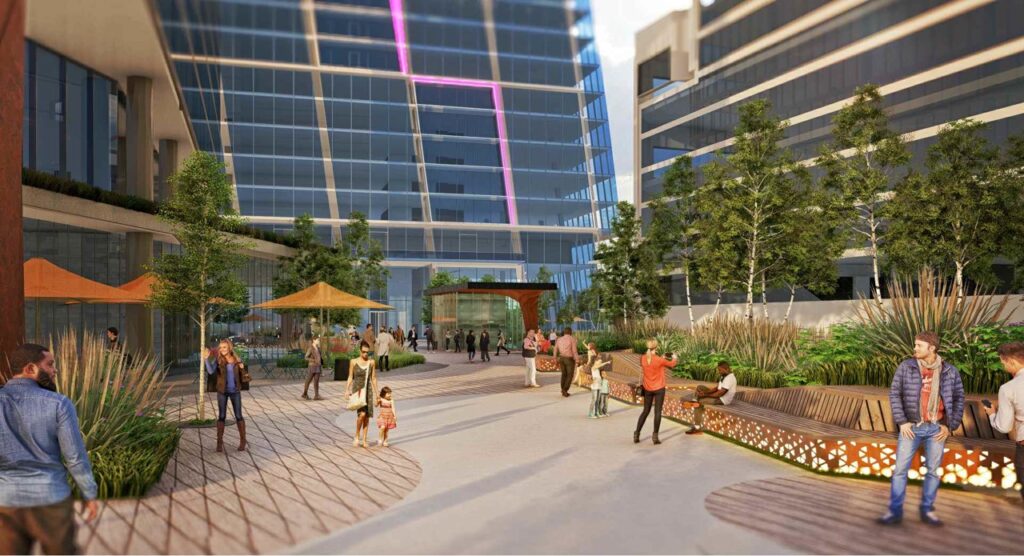Design to scale: How to develop adaptable office spaces
How do you design buildings and spaces that meet occupants’ critical life/work/play balance while providing viable projects for developers, landlords and leasers? How do you foster interpersonal connections between in-office and remote workers and bring value to work outcomes, while also providing for adaptability that advances business, individual and community success?
Considering solutions through the lens of multiple scales — the city, the block or campus, the building and the office space — is an approach to designing offices that fosters interpersonal connections and integrates adaptability at its core, while inherently offering solutions that break down complexity. Designing to scale advances a balanced approach for occupants, while incorporating the feasibility and flexibility developers and landlords need to meet their current and future objectives. Here are four principles to consider when implementing this concept.
Context
Design in the context of multiple scales is key to delivering this essential balance. At each scale, designers consider the needs of building occupants, corporate owners, lessees, landlords and developers. To develop spaces that work across contexts, designers focus on functionality and adaptability from the broadest view — the city or location — progressively zeroing in on each level from a city block or suburban campus, an individual building and finally to the office space. Design priorities correspond to these scales, ranging from integrating into existing infrastructure and public spaces at the location scale to supporting social connections at the office space scale.
Incorporated into each of the various scales, designers address features to enhance workforce health. This begins with evaluating city- or location-specific needs ranging from connected spaces and available surrounding services to the setting on a block or a campus where designers consider green spaces that support wellness and encourage community interactions.
Our professionals explored this concept at Commerce Metro Center in Reston, Virginia, where we developed a masterplan for 12 acres of land that integrated existing office buildings with new mixed-use buildings along a transit hub. The plan is organized around a public space spine linking restaurants and outdoor dining with hotel amenities, office lobbies, residential buildings and the metro on one seamless level, addressing many aspects of the live/work/play triangle.
Flexibility
The pandemic super-charged trends that were already in motion with many more people now balancing a hybrid schedule of in-person and remote work. Developing designs that emphasize flexibility at various scales and consider who uses the office space and how — now and in the future — benefits occupants as well as owners, developers and landlords. Design aspects can range from creating shared public spaces within private buildings to developing smart systems that maximize building occupancy and providing reconfigurable spaces that encourage personalization.
Resiliency
Climate change presents new challenges to business operations. If office spaces are not designed with resiliency in mind, they present the potential for costly interruptions or shutdowns. Incorporating forward-thinking resilient elements, at multiple scales, allows office spaces to maintain operations. For example, offices in areas prone to flooding may locate backup generators on high floors to minimize potential flood impacts or place parking at ground level so essential office functions are elevated above the flood zone.
Equity
An increased focus on equity is leading designers to balance office and hybrid workers’ needs. Developing a distributed real estate model that improves accessibility is a primary consideration, with design solutions that provide inclusive, flexible spaces to increase desk availability if more capacity is needed on days when remote workers report to the office.
Into the future
With new workplace and workforce trends taking hold in the corporate and commercial sector, businesses are recognizing the importance of how office spaces function within broader ecosystems – physical, virtual, public, private, social, individual — that create value. A design approach that thoughtfully considers multiple scales and meets the critical life/work/play balance is emerging as a new design standard, one that will serve us all well into the future.







